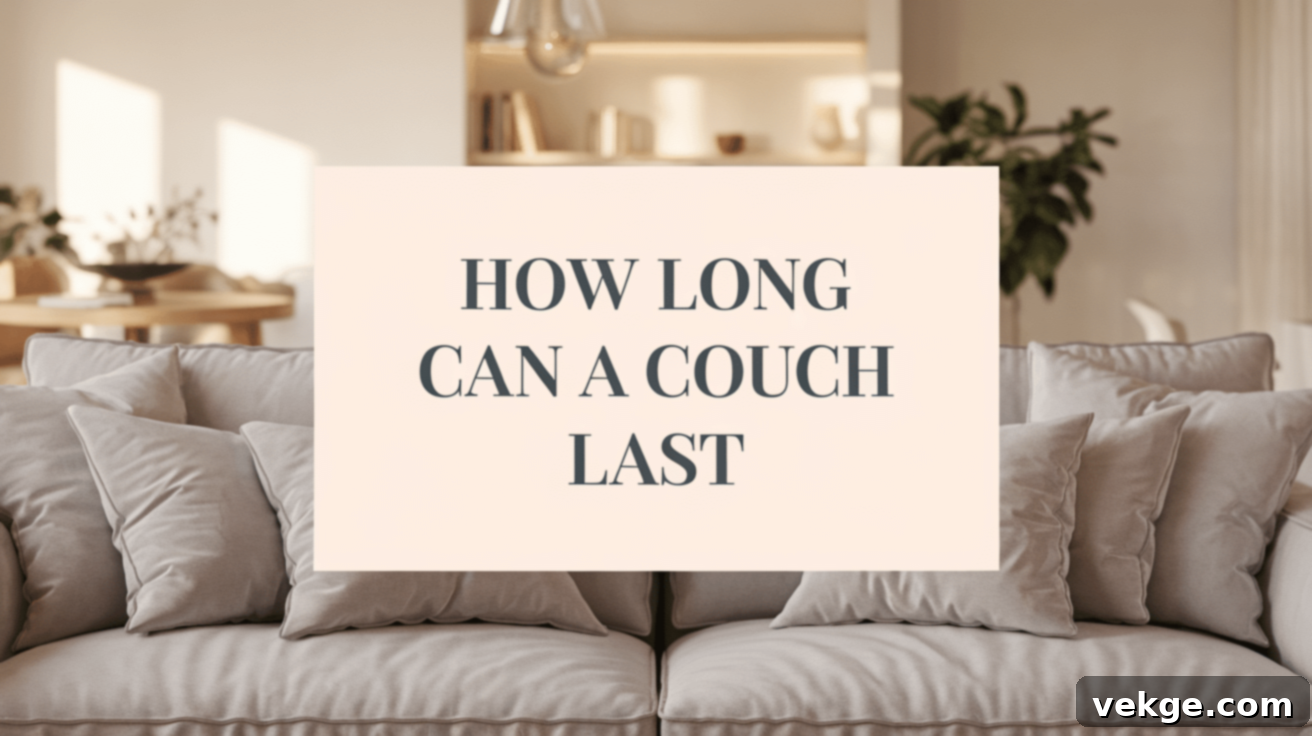The Ultimate Guide to Couch Lifespan: How Long Do Your Sofas Really Last?
Your couch is often the centerpiece of your living room, a hub of activity where families gather, friends relax, and pets snuggle. Given its central role and frequent use, it’s no wonder that a sofa can begin to show signs of wear and tear over time. This naturally leads many to wonder: “How long can my couch actually last?”
It’s a common question that often only crosses our minds when we find ourselves sinking into a lumpy cushion or noticing frayed fabric. The truth is, the lifespan of a couch isn’t a fixed number; it can range anywhere from 5 to 15 years, and sometimes even longer, largely depending on a few critical factors.
These factors include the quality of the materials used in its construction, how often it’s used in your home, and the level of care and maintenance it receives. In this comprehensive guide, we’ll delve deep into what influences a couch’s durability, how to identify the tell-tale signs that it might be time for a new one, and offer valuable tips to help your beloved sofa stay comfortable and stylish for as long as possible. Let’s explore whether your couch is ready for a well-deserved retirement or if it still has many good years left to offer.
How Long Do Couches Usually Last?
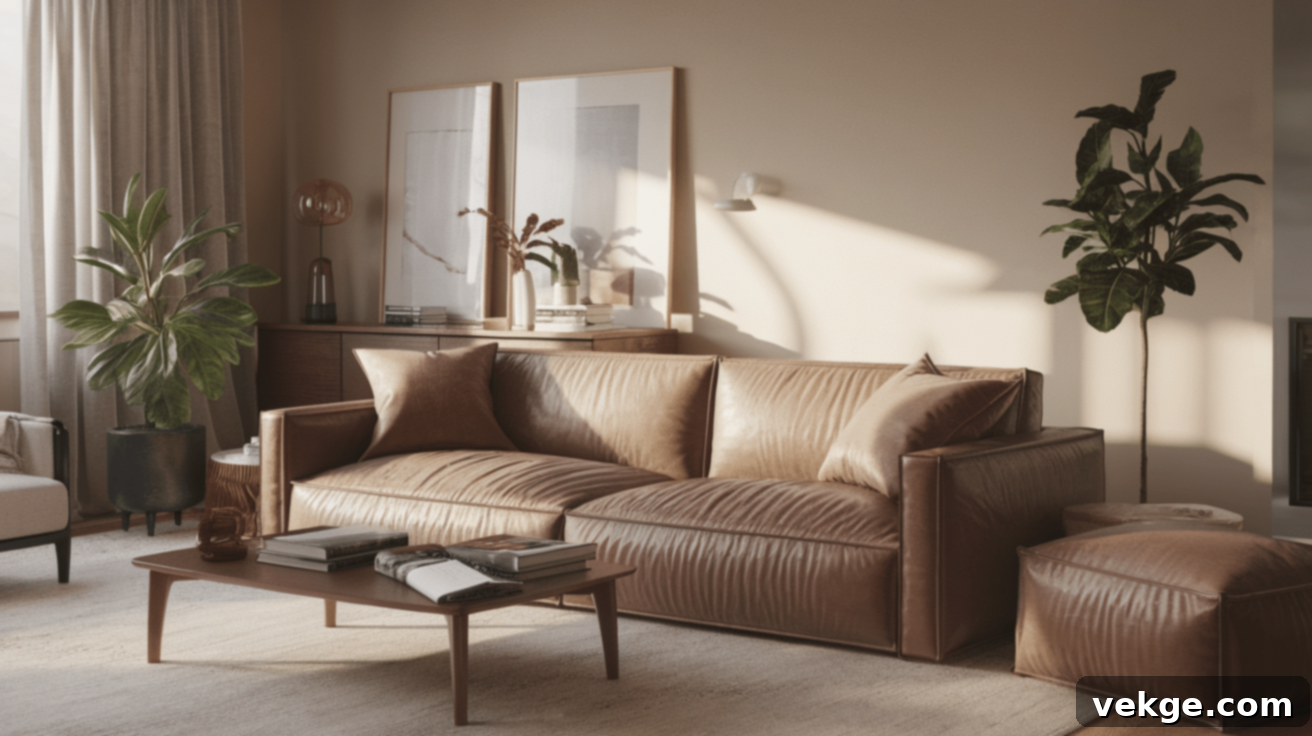
The typical lifespan of a couch can vary significantly. On average, a well-constructed and properly maintained couch can be expected to last between 7 to 15 years. However, this is a broad spectrum, and individual experiences will differ based on a multitude of variables.
For instance, a sofa in a bustling family home with young children and pets will likely endure more stress and require replacement sooner than a couch placed in a less-frequented guest room. The initial investment also plays a crucial role; higher-quality couches built with superior materials and craftsmanship are inherently designed for greater longevity. Conversely, budget-friendly options, while appealing, may not offer the same extended lifespan. Understanding these nuances is key to managing your expectations and making informed decisions about your furniture.
Factors That Affect the Lifespan of a Couch
Several critical factors collectively determine how long your couch will remain a functional and aesthetically pleasing part of your home. By understanding these influences, you can not only choose a couch more wisely but also implement practices that maximize its lifespan.
1. Material of the Couch
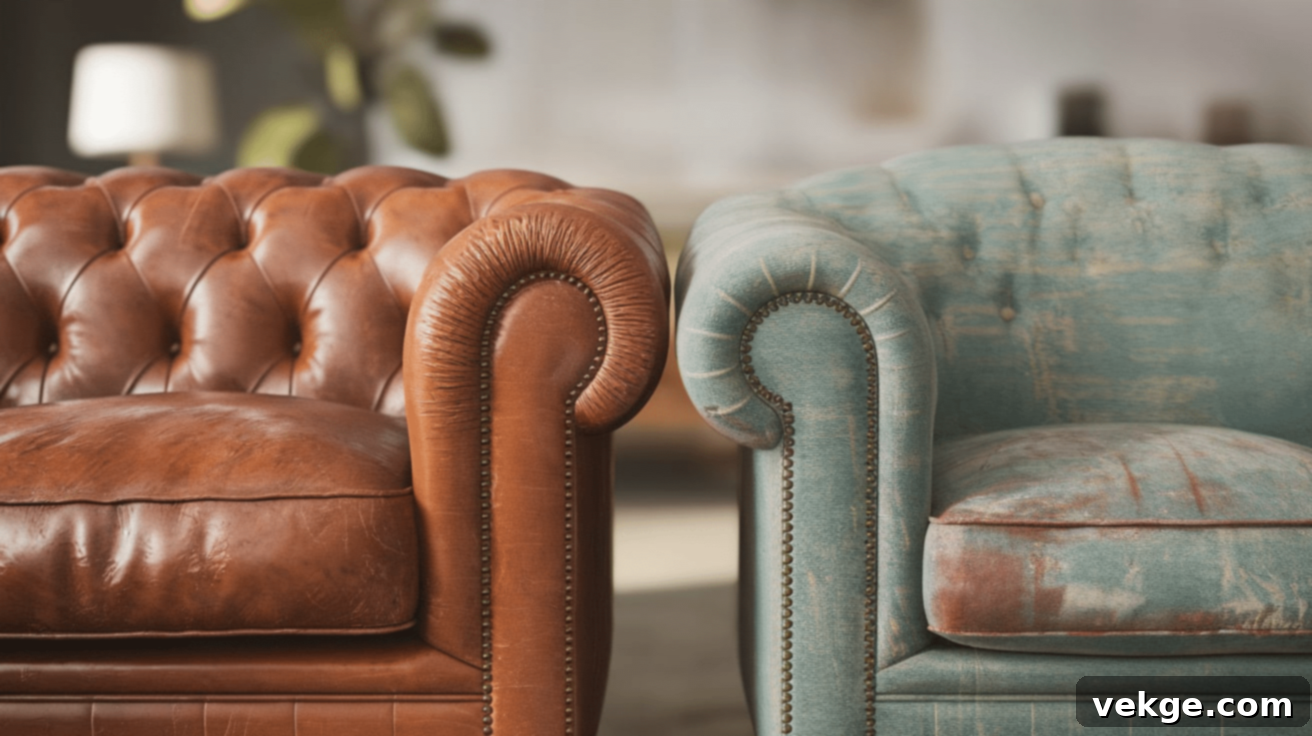
The upholstery material is one of the most significant determinants of a couch’s durability and how gracefully it ages. Different materials offer varying levels of resistance to wear, stains, and environmental factors.
- Leather: Renowned for its exceptional durability and sophisticated appearance, leather can last for decades with proper care. It’s naturally resistant to stains and relatively easy to wipe clean. High-quality leather develops a beautiful patina over time, enhancing its character. However, it can be susceptible to scratches, especially from pets, and prolonged exposure to direct sunlight can cause drying, cracking, and fading.
- Fabric: Fabric couches offer an enormous range of textures, colors, and patterns. Their durability varies widely by type:
- Microfiber: This synthetic fabric is highly durable, soft, and exceptionally resistant to stains and spills, making it an excellent choice for homes with pets and children. It’s also easy to clean.
- Polyester: Often blended with other fibers, polyester is known for its strength, wrinkle resistance, and ability to hold color well. It’s a robust option for everyday use.
- Cotton/Linen: Natural fibers like cotton and linen offer breathability and a classic look but can be more prone to staining, wrinkling, and fading in direct sunlight. They often require more careful cleaning.
- Velvet: While adding a luxurious touch, velvet can be more delicate. It’s prone to crushing (where the pile flattens), showing marks, and can be challenging to clean. Special care is crucial to maintain its plush appearance.
2. How Often It’s Used

The frequency and intensity of your couch’s use directly impact its longevity. A couch that serves as the primary seating in a bustling family room will naturally wear out faster than one reserved for occasional guests in a formal living area.
- Daily, High-Traffic Use: If your couch is used daily for lounging, movie nights, eating, or as a play area for children and pets, it will experience significant wear and tear. Cushions may quickly lose their loft and shape, fabric can stretch, fade, or show pilling, and the frame and springs will undergo more stress. This accelerated depreciation means a shorter overall lifespan.
- Occasional or Low-Traffic Use: Couches in secondary living spaces, studies, or guest rooms that see only occasional use will typically last much longer. The reduced stress on the upholstery, cushions, and frame preserves their integrity and appearance for many years.
3. Quality of the Couch
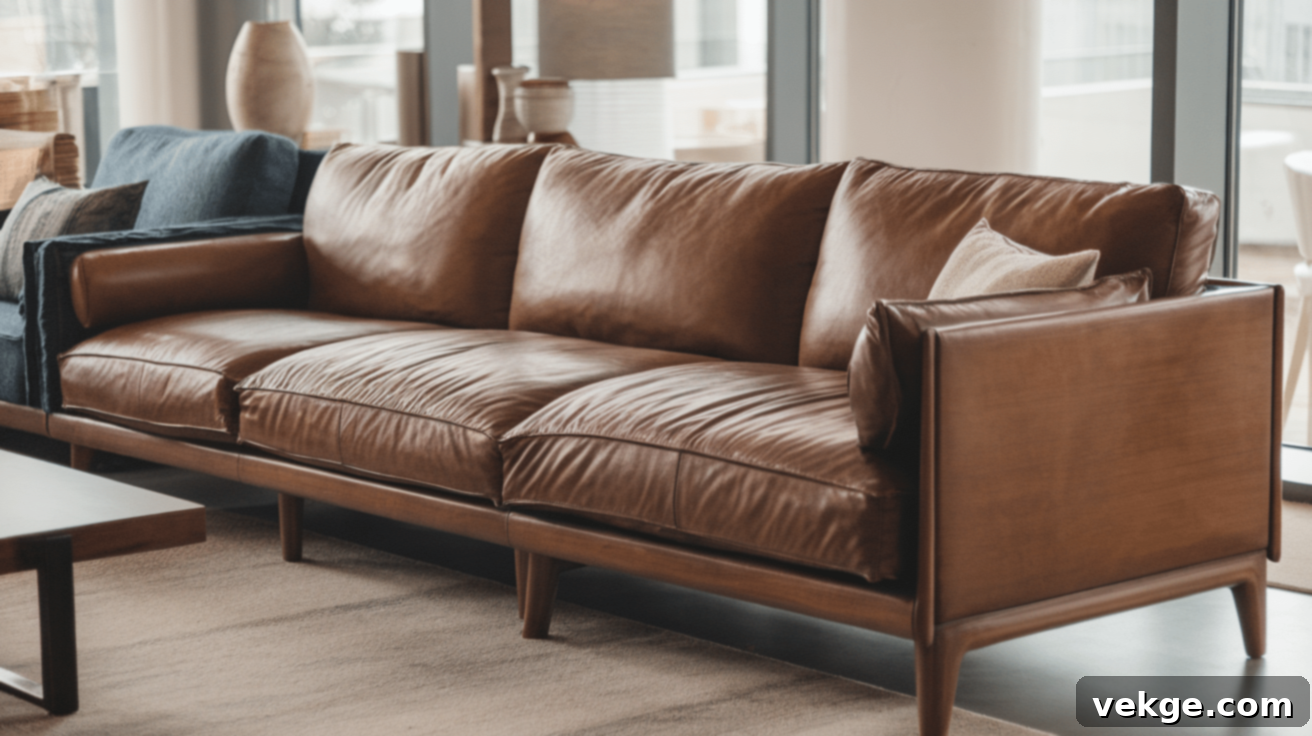
The inherent quality of a couch, from its internal frame to its cushioning, is a major determinant of its durability. Investing in a higher-quality piece often translates to a significantly longer lifespan.
Look for couches constructed with robust, kiln-dried hardwood frames (such as oak, maple, or birch) that are joined with methods like dowels, screws, or corner blocks. Avoid frames made from particleboard, softwoods, or only staples and glue, as these are prone to warping, breaking, and instability. High-density foam cushions (1.8 PCF or higher) or down-wrapped foam will maintain their shape and support far better than low-density foam or loose polyester fiberfill, which can flatten and clump quickly. Quality suspension systems, like eight-way hand-tied springs or durable sinuous springs, also contribute to comfort and longevity, preventing sagging seats.
4. Maintenance and Care
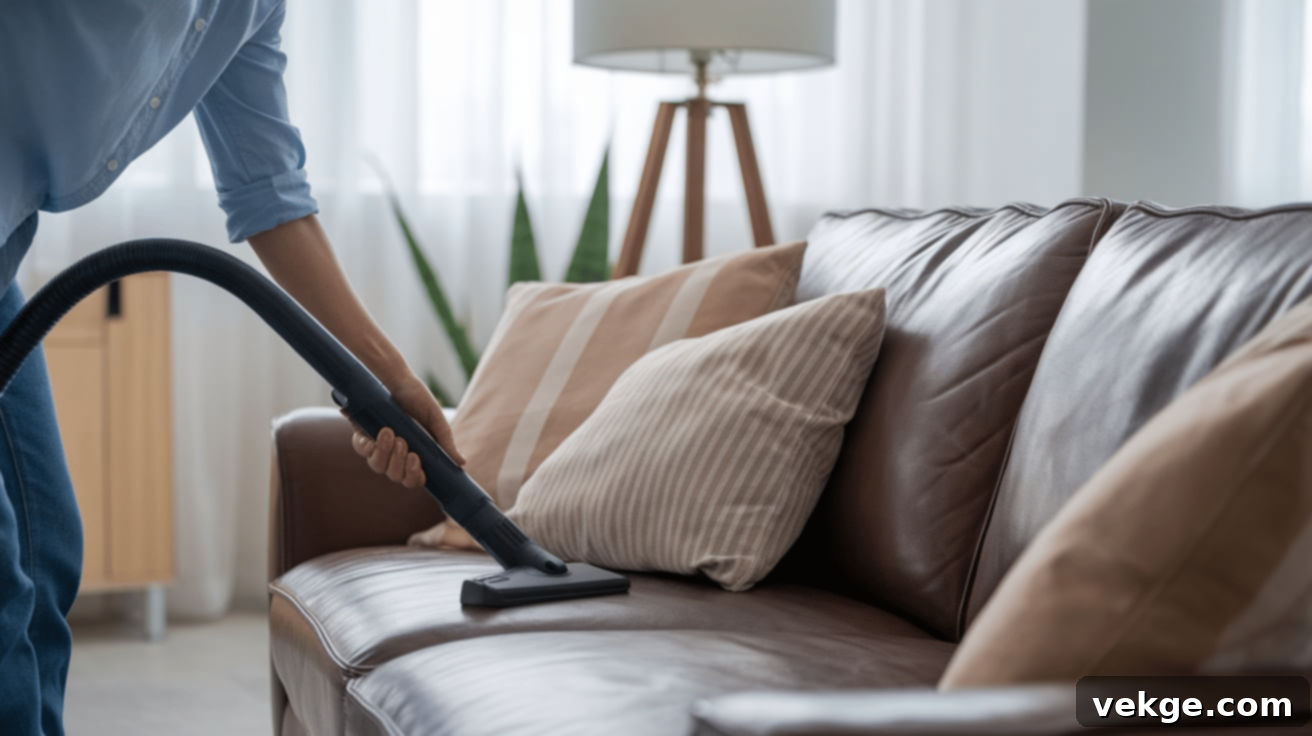
The effort you put into maintaining your couch can dramatically extend its life. Proper care isn’t just about keeping it clean; it’s about preserving its structural integrity and aesthetic appeal.
This includes routine vacuuming to remove dirt and dust that can abrade fabric fibers, promptly addressing spills and stains according to the manufacturer’s guidelines, and regularly fluffing and rotating cushions. Rotating reversible cushions ensures even wear, preventing specific spots from becoming permanently compressed or worn down. Adhering to cleaning instructions for your specific upholstery material is crucial, as using the wrong products can cause irreversible damage. These seemingly small acts of maintenance can prevent premature aging and add years to your couch’s lifespan.
5. Pets and Children
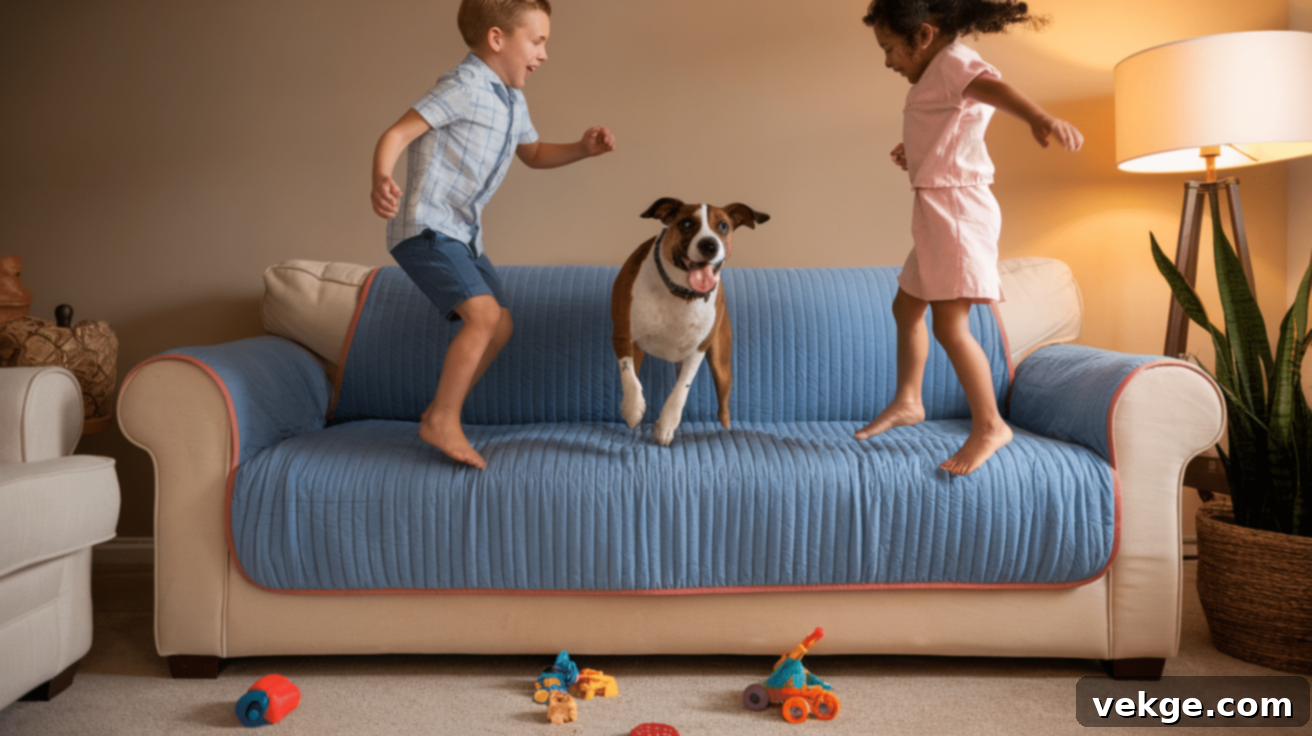
For households with furry friends or lively youngsters, a couch faces unique challenges that can significantly shorten its life. Pets can cause damage through scratching, chewing, shedding, and accidental “accidents” that lead to stains and odors. Children, on the other hand, are prone to spills, jumping on cushions, and general rough-and-tumble play that stresses upholstery and frames.
While completely avoiding these interactions is often impossible, proactive measures can help. Opting for durable, stain-resistant fabrics like microfiber or performance fabrics is a wise choice. Using washable slipcovers, throw blankets, or pet protectors can create a barrier against daily wear, fur, and spills, keeping the underlying upholstery in much better condition.
6. Sunlight and Temperature
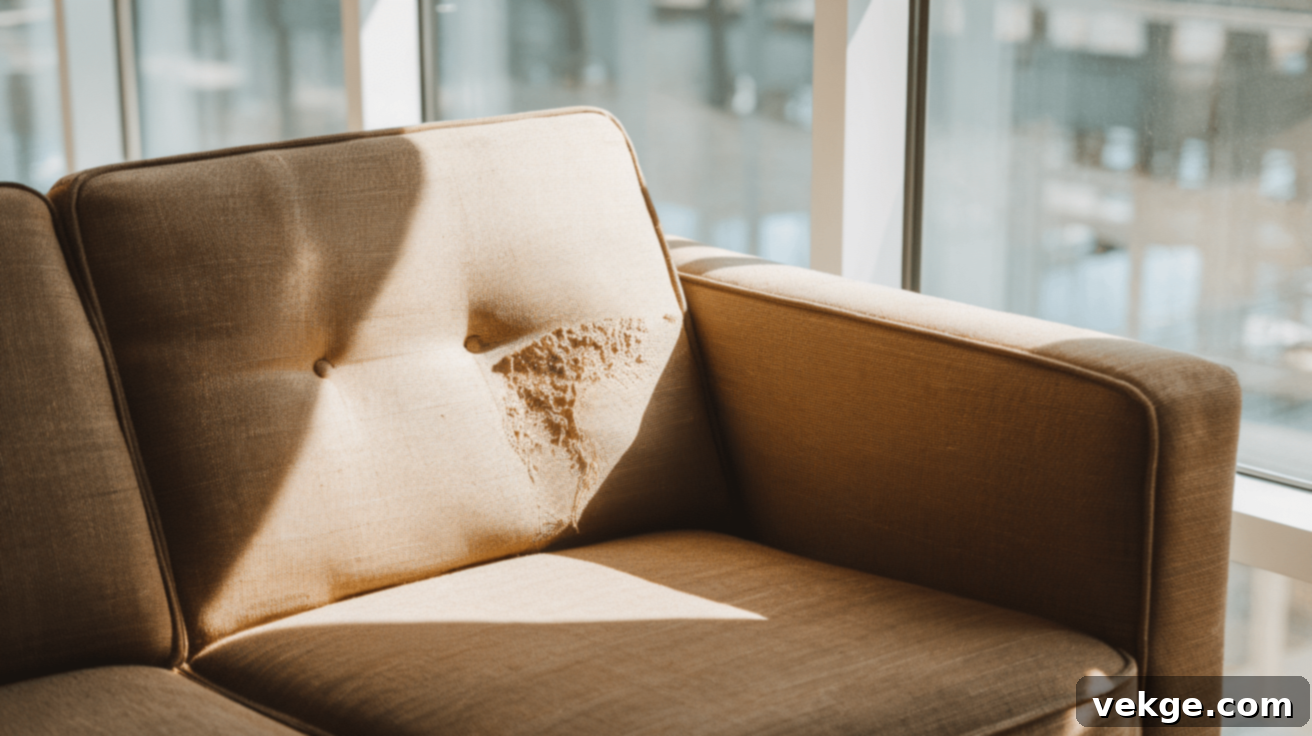
Environmental factors like direct sunlight and extreme temperature fluctuations can significantly degrade couch materials over time. Prolonged exposure to direct UV rays from sunlight can cause fabrics to fade, weaken, and even fray, leading to premature aging. For leather couches, sunlight can dry out the material’s natural oils, making it brittle, prone to cracking, and causing severe discoloration.
Similarly, placing a couch too close to heat sources (like radiators or fireplaces) or air conditioning vents can cause materials to expand and contract excessively. This constant stress can weaken fibers, loosen joints, and cause irreversible damage to upholstery, thereby reducing the overall lifespan of your couch.
How to Keep Your Couch Looking New (and Extend Its Life)
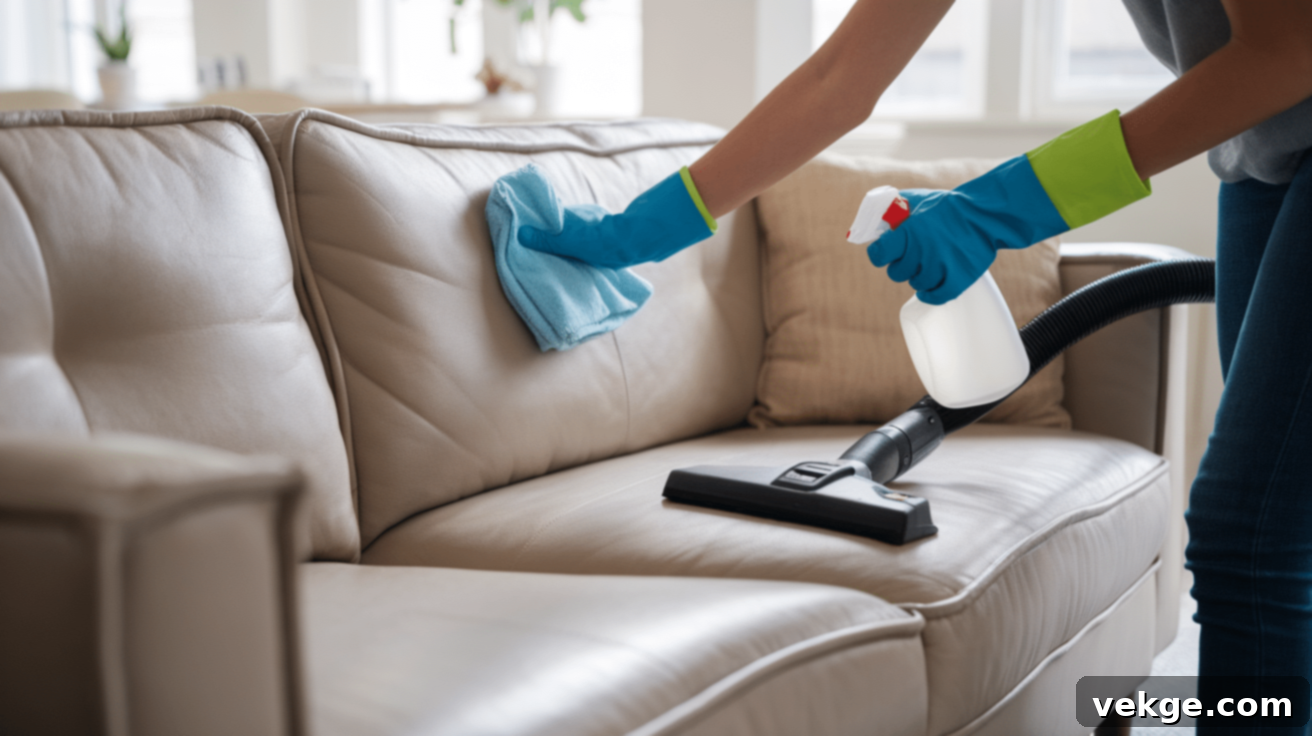
Your couch is a substantial investment and a key element of your home’s comfort and style. By adopting a few simple yet effective maintenance habits, you can significantly extend its life and keep it looking fresh and inviting for many years to come.
1. Vacuum Regularly
Dust, crumbs, pet dander, and other debris can easily settle into the fabric fibers of your couch, especially in high-traffic areas and crevices. This accumulation isn’t just unsightly; it can also be abrasive, gradually wearing down the upholstery. Make it a habit to vacuum your couch weekly or bi-weekly, using a soft brush attachment designed for upholstery. Pay close attention to cushions, armrests, and the areas underneath and between cushions to remove hidden dirt and prevent premature wear.
2. Spot Clean Stains Quickly
Accidental spills are inevitable, but swift action is your best defense against permanent stains. As soon as a spill occurs, blot the area immediately with a clean, white cloth or paper towel to absorb as much liquid as possible – never rub, as this can spread the stain or push it deeper into the fabric. Consult your couch’s care tag for specific cleaning instructions and recommended products. For fabric sofas, a mild, fabric-specific cleaner is usually best. For leather, use a soft cloth with a mild leather cleaner. Always test any cleaning solution on an inconspicuous area first to ensure it doesn’t cause discoloration or damage.
3. Fluff and Rotate Cushions
To maintain the shape, comfort, and longevity of your cushions, make a habit of fluffing and rotating them regularly. Daily fluffing helps redistribute the filling, preventing it from compacting and making your couch feel more comfortable and look fuller. If your cushions are reversible, flip and rotate them (e.g., move back cushions to the seat, or switch cushions from one end to the other) every few months. This ensures that wear and tear are distributed evenly across all surfaces, preventing specific spots from becoming permanently flattened or sunken.
4. Use Slipcovers or Throws
For an added layer of protection, especially in busy households with children and pets, consider using slipcovers or throw blankets. Slipcovers offer a customizable and practical solution; they can be easily removed, machine-washed, or dry-cleaned, keeping your sofa pristine underneath. They also offer an excellent way to change your decor seasonally or update a tired look. Throws serve a similar purpose, protecting high-wear areas while adding a cozy, stylish element to your living space. They are particularly effective against pet hair and small spills.
5. Keep Your Sofa Out of Direct Sunlight
As mentioned earlier, direct sunlight is a major culprit for fabric fading and leather cracking. To preserve your couch’s color and material integrity, position it away from windows or use curtains, blinds, or UV-filtering window films to block harmful UV rays. If rearranging isn’t an option, rotating your couch periodically (if feasible) or using throws can offer some protection to the most exposed areas.
6. Avoid Harsh Chemicals
When cleaning your sofa, always prioritize gentle, pH-neutral cleaners specifically designed for your upholstery material. Harsh chemicals, abrasive cleaners, or even excessive water can strip protective coatings, damage dyes, weaken fibers, or leave unsightly residue, significantly shortening your sofa’s lifespan. Always read the manufacturer’s cleaning codes (W for water-based, S for solvent-based, WS for both, X for vacuum only) and instructions carefully. When in doubt, a professional upholstery cleaner is always the safest bet.
7. Maintain the Frame
The structural integrity of your couch’s frame is just as important as its upholstery. Periodically inspect the legs and the overall frame to ensure everything is stable and secure. Loose screws or bolts can lead to wobbling, squeaking, and eventually, structural damage. If you notice any looseness, carefully tighten the screws. A sturdy frame ensures that your couch remains safe, comfortable, and durable for its full intended lifespan.
Cost-Effective Ways to Revamp an Old Couch
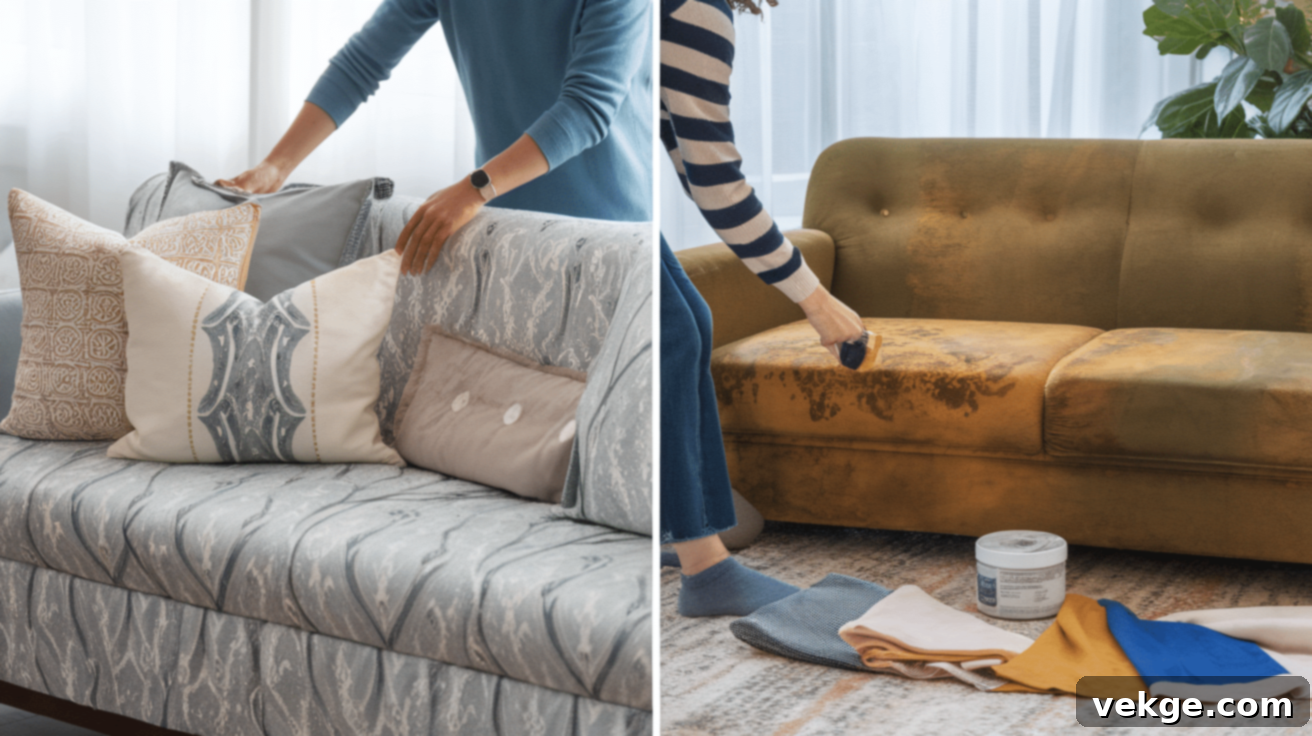
Not every couch showing signs of age needs to be discarded. Many old sofas, especially those with good frames, can be given a new lease on life with some smart, cost-effective updates. Revamping your couch can save you money and reduce waste, giving your living space a fresh look without a full replacement.
1. Reupholster the Couch
If your couch’s frame is still solid and well-built, but the fabric is stained, torn, or severely worn, reupholstering is an excellent option. This process involves stripping off the old fabric and replacing it with a new one of your choice. While it can be an investment, reupholstering is often significantly cheaper than buying a high-quality new couch, especially if your original piece was well-made. It also allows you to customize the fabric to perfectly match your current decor and style preferences, breathing entirely new life into your furniture.
2. Add Throw Pillows and Blankets
One of the quickest and most affordable ways to refresh an old couch is by updating its accessories. New throw pillows in vibrant colors, interesting patterns, or luxurious textures can instantly change the entire aesthetic. Pair them with a stylish throw blanket draped artfully over the back or armrest. These simple additions can distract from minor imperfections on the couch itself and introduce a fresh, inviting feel to your living space, making your old sofa look intentional and chic.
3. Use Slipcovers
Slipcovers are a transformative solution for couches that are structurally sound but cosmetically challenged. Available in a vast array of fabrics, colors, and styles, a slipcover can completely conceal worn upholstery, hide stains, and protect against future damage. They are incredibly practical, as most are machine-washable, making maintenance a breeze. Beyond protection, slipcovers offer incredible versatility, allowing you to easily change the look of your couch to match seasons, holidays, or simply your evolving taste, all at a fraction of the cost of a new sofa.
4. Re-stuff Cushions
Over time, couch cushions inevitably lose their firmness and begin to sag, impacting both comfort and appearance. Instead of replacing the entire couch, consider re-stuffing the cushions. You can purchase high-density foam inserts, polyester fiberfill, or a down-feather blend to replace or supplement the existing filling. This process can be a DIY project for the handy individual or performed by an upholstery professional. Re-stuffing restores the loft, support, and comfort of your cushions, making your couch feel like new again without a hefty price tag.
5. Touch Up the Frame
For couches with exposed wooden or metal frames, minor scuffs, scratches, or dullness can make the entire piece look tired. A simple touch-up can work wonders. For wooden frames, use wood polish, stain pens, or even a light sanding and re-varnish. For metal frames, specialized metal paints or polishes can restore their shine. This inexpensive maintenance can significantly improve the overall appearance of your couch, demonstrating that sometimes, small details make a big difference in rejuvenating furniture.
By exploring these cost-effective solutions, you can significantly extend the usable life of your couch, enhance its aesthetic appeal, and avoid the substantial expense of purchasing a brand-new piece.
Signs It’s Time to Replace Your Couch
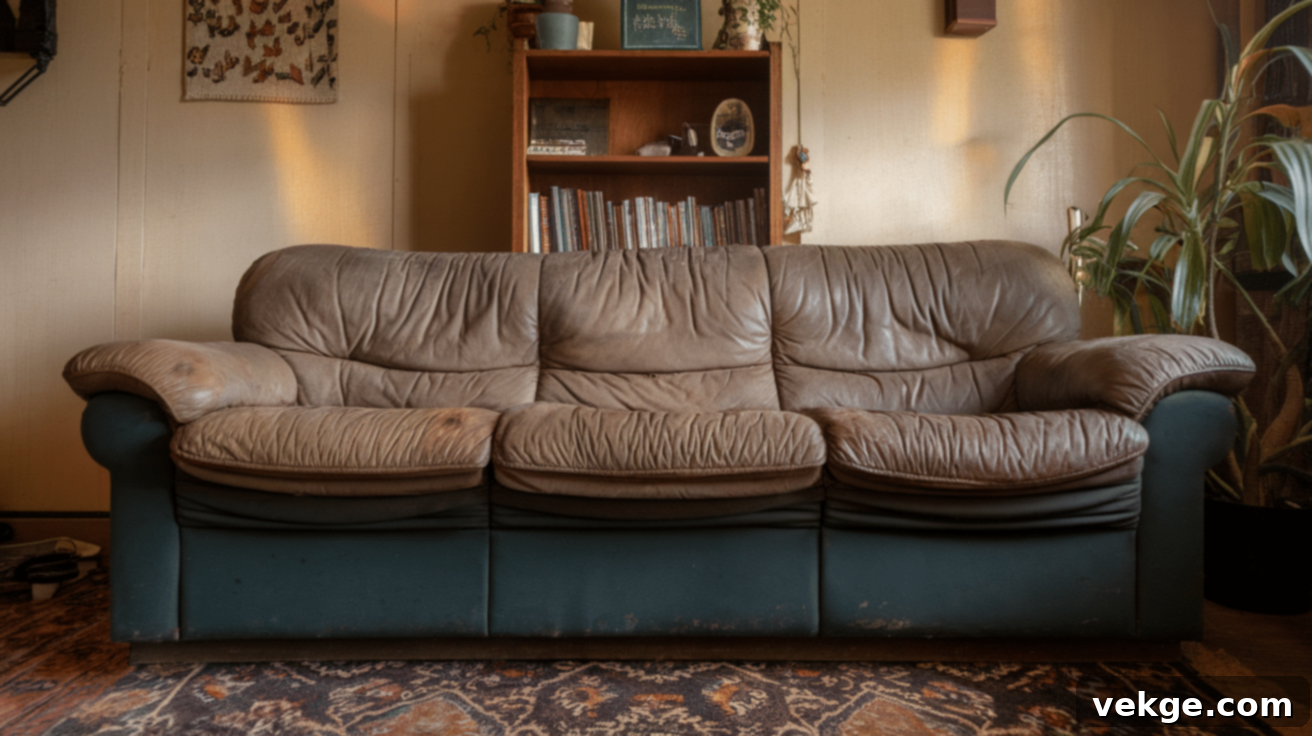
While many couches can be salvaged or revamped, there comes a point when replacement is the more practical and beneficial option. Knowing when to let go can save you from continuous repairs and improve your comfort and living environment. Here are common signs that your couch has likely reached the end of its useful life.
1. The Cushions Have Lost Their Shape
One of the most immediate indicators of an aging couch is permanently saggy, lumpy, or flattened cushions. This happens when the foam or padding inside breaks down, loses its resilience, or shifts unevenly. If regular fluffing and rotating no longer restore their shape or comfort, and sitting on your couch feels like sinking into a void, it’s a clear sign that the internal support system is compromised beyond simple re-stuffing for daily use. A new couch will offer the support and comfort you deserve.
2. Visible Wear and Tear
Beyond normal aging, severe visible damage can signal it’s time for a replacement. This includes extensive fraying, large tears, significant pilling, or irreversible fading of fabric. For leather, deep cracks, peeling, or widespread scuffs that can’t be conditioned or repaired are red flags. While some cosmetic damage can be covered, if your couch looks perpetually old and worn, detracting from your home’s aesthetic, its structural integrity might also be compromised, making a new purchase a better long-term investment.
3. Squeaky or Loose Frame
A healthy couch should be sturdy and silent. If your couch creaks, groans, or wobbles excessively every time someone sits down or moves, it usually indicates a problem with the internal frame. Loose joints, a cracked frame, or broken springs not only make the couch uncomfortable but can also make it unsafe. While minor wobbles can sometimes be fixed by tightening bolts, significant structural damage often means the frame is beyond economical repair, making a full replacement the most sensible solution.
4. Uncomfortable Seating
The primary purpose of a couch is to provide comfortable seating. If, despite your best efforts at fluffing and rotating cushions, your couch remains consistently uncomfortable – perhaps you feel springs poking through, or it offers no back support – it’s a strong signal. Discomfort can stem from degraded foam, worn-out springs, or a compromised frame. Prolonged use of an uncomfortable couch can lead to poor posture and even back pain, making a comfortable and supportive new couch a priority for your well-being.
5. Fading or Staining
While some stains can be spot-cleaned, others become permanent, especially if not addressed promptly or if the fabric is particularly absorbent. Similarly, extensive fading due to sun exposure can permanently alter the couch’s color and make it look tired and unappealing. If your couch’s upholstery has reached a point where widespread staining or severe fading significantly detracts from its appearance, and you’ve exhausted all cleaning efforts, it’s often a sign that its aesthetic lifespan has concluded. A new couch can revitalize your living space and provide a fresh, clean look.
What to Look for in a New Couch
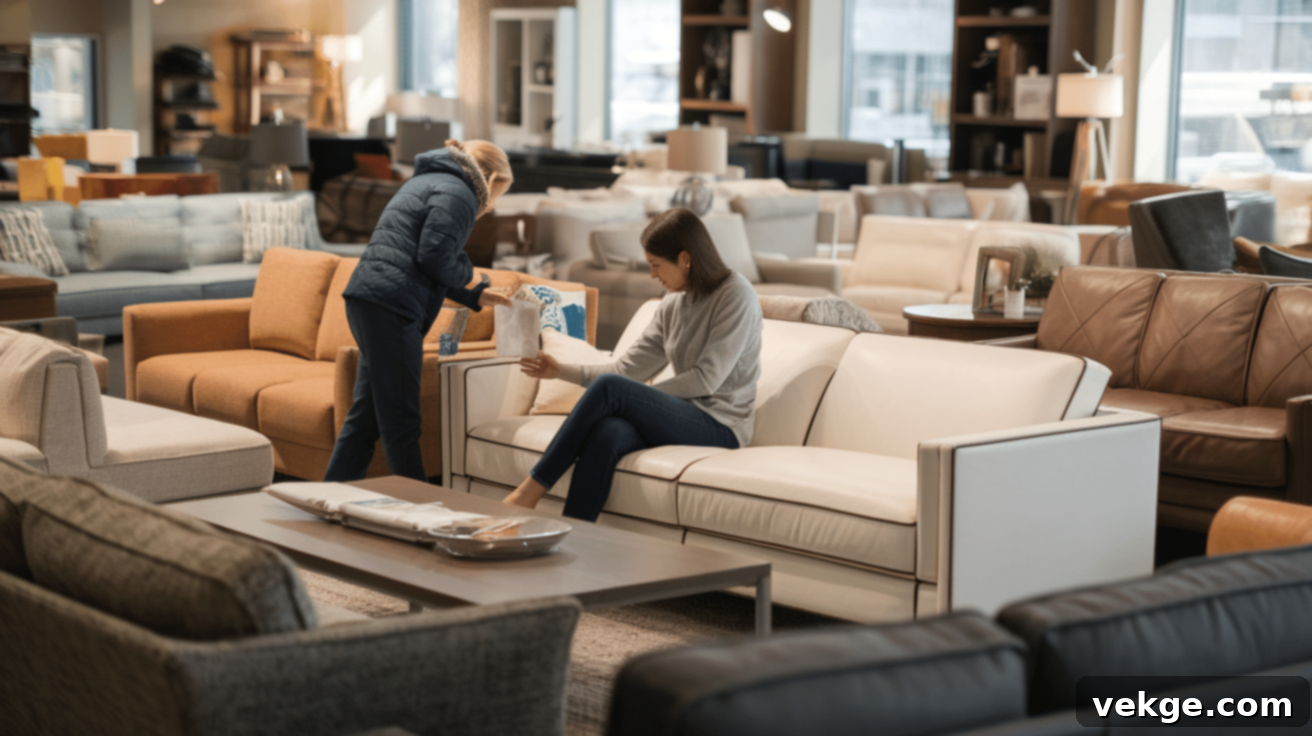
When the time comes to invest in a new couch, making an informed decision is crucial. A new sofa isn’t just a piece of furniture; it’s a long-term commitment to your comfort and home’s aesthetic. Here’s what to prioritize when shopping for your next perfect couch.
1. Consider the Size
Before you fall in love with a design, carefully measure your living space. Consider the length, depth, and height of the couch, ensuring it fits comfortably without overwhelming the room. Also, measure doorways, hallways, and stairwells to confirm it can be delivered and moved into place without issue. A couch that’s too large can make a room feel cramped, while one that’s too small might look out of proportion. Plan for adequate walking space around the couch and harmonious placement with other furniture.
2. Think About Your Lifestyle
Your daily routine and household dynamics should heavily influence your choice. For busy homes with children and pets, prioritize durability and easy-to-clean materials like performance fabrics (e.g., stain-resistant polyester, microfiber) or protected leather. If entertaining guests is frequent, consider a sectional with ample seating. For quiet households or formal living rooms, more delicate fabrics like velvet or linen might be suitable. If the couch is primarily for lounging and movie nights, deep seats, plush cushions, and perhaps recline features will be important.
3. Style and Design
The couch should complement the overall aesthetic of your living room and reflect your personal taste. Whether your home is modern, traditional, minimalist, bohemian, or eclectic, choose a design that integrates seamlessly. Consider the color palette, leg style, armrest design, and overall silhouette. A timeless design can adapt to changing decor over the years, while a trendy piece might need more frequent updates.
4. Frame and Cushioning
These internal components are the backbone of a durable couch. Look for a frame made from kiln-dried hardwood (oak, maple, birch) joined with dowels, screws, and corner blocks for maximum strength. Avoid particleboard or softwood frames. For cushioning, high-density foam (1.8 PCF or higher) is ideal for seat cushions, offering firm support and shape retention. Back cushions can be softer, with options like down-blend or channeled fiberfill for comfort. Test the cushions by sitting on them; they should feel supportive and bounce back quickly when you stand up.
5. Functionality
Beyond basic seating, consider any additional functions that would benefit your home. Do you frequently host overnight guests? A sleeper sofa or convertible couch could be invaluable. Do you need extra storage? Some sectionals or ottomans come with built-in storage compartments. Are you looking for ultimate relaxation? Reclining sofas offer adjustable comfort. Thoughtfully selecting a couch with features that align with your needs will ensure it’s not only stylish but also incredibly practical for everyday use.
By carefully considering these factors, you can select a new couch that not only meets your aesthetic desires but also provides lasting comfort, durability, and functionality for your home for many years.
How Couch Construction Influences Durability
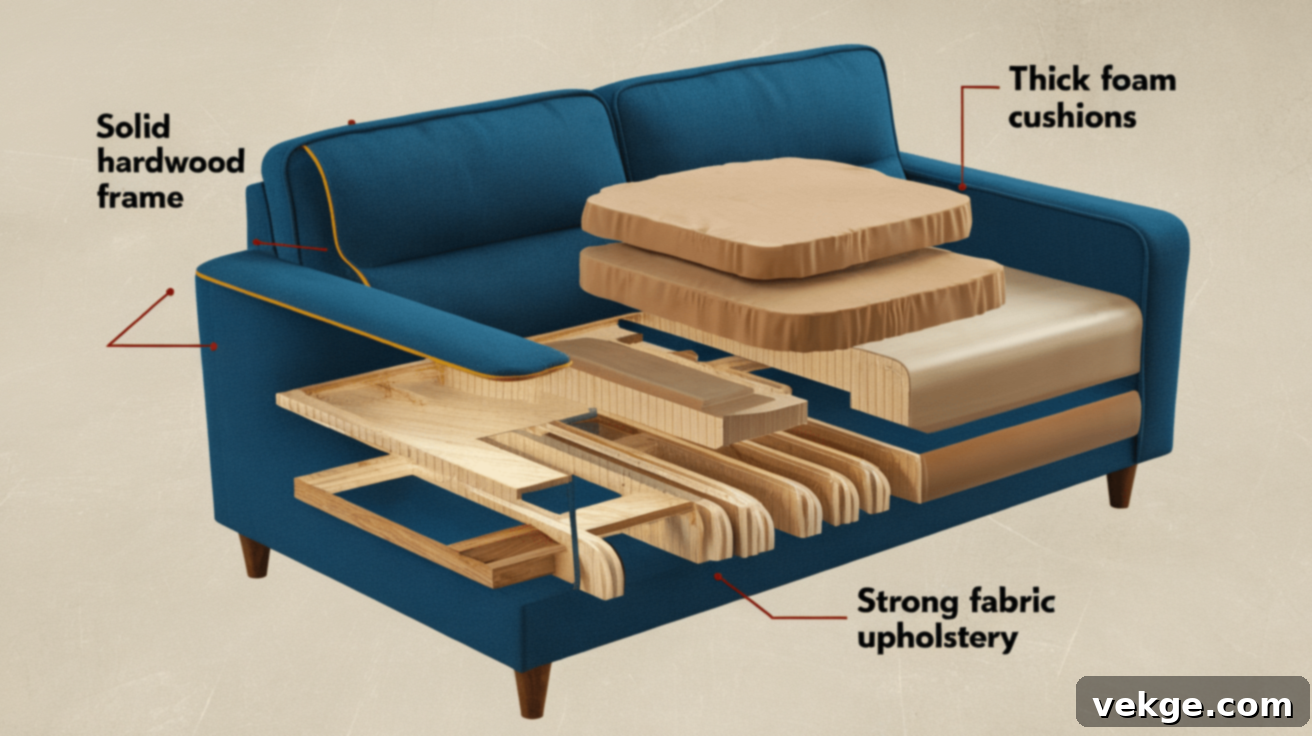
The internal construction of a couch is often hidden beneath the upholstery, yet it’s the most critical factor determining its longevity and performance. Understanding these structural elements can empower you to make a wise investment.
-
Frame: The foundation of any durable couch is a robust frame. High-quality sofas feature frames made from kiln-dried hardwood (such as oak, maple, birch, or ash), which resists warping and cracking. Kiln-drying removes moisture, preventing future structural issues. Avoid frames made from particleboard, softwoods, or metal that feels flimsy, as these are prone to breaking, bending, or becoming wobbly over time. A sturdy frame ensures the entire piece remains stable and supportive for decades.
-
Cushions: The type and density of cushion filling directly impact comfort and how long they retain their shape. High-resiliency (HR) foam with a density of 1.8 PCF (pounds per cubic foot) or higher is excellent for seat cushions, providing firm support and bouncing back after use. For a softer feel, look for foam cores wrapped in down, feathers, or a down-synthetic blend. Cheaper couches often use low-density foam or loose polyester fiberfill, which flatten and clump quickly, leading to an uncomfortable and worn appearance within a few years.
-
Joinery: How the frame pieces are held together is crucial for durability. The strongest frames use traditional joinery methods like mortise-and-tenon, dowels, or corner blocks reinforced with screws. These methods create strong, lasting bonds. Avoid frames that rely heavily on only staples, glue, or nails, as these connections are significantly weaker and more likely to loosen, creak, and break down under regular stress, compromising the sofa’s structural integrity.
-
Suspension System: The springs beneath the cushions are vital for support and comfort. The gold standard is eight-way hand-tied coil springs, which offer superior support and independent movement. Sinuous (S-shaped) springs are a good alternative, especially if they are heavy-gauge and closely spaced. Drop-in coil units are also a good option. Avoid couches with webbing-only suspension (fabric or elastic strips), as these tend to sag quickly and offer less support over time.
Benefits of Regular Couch Maintenance
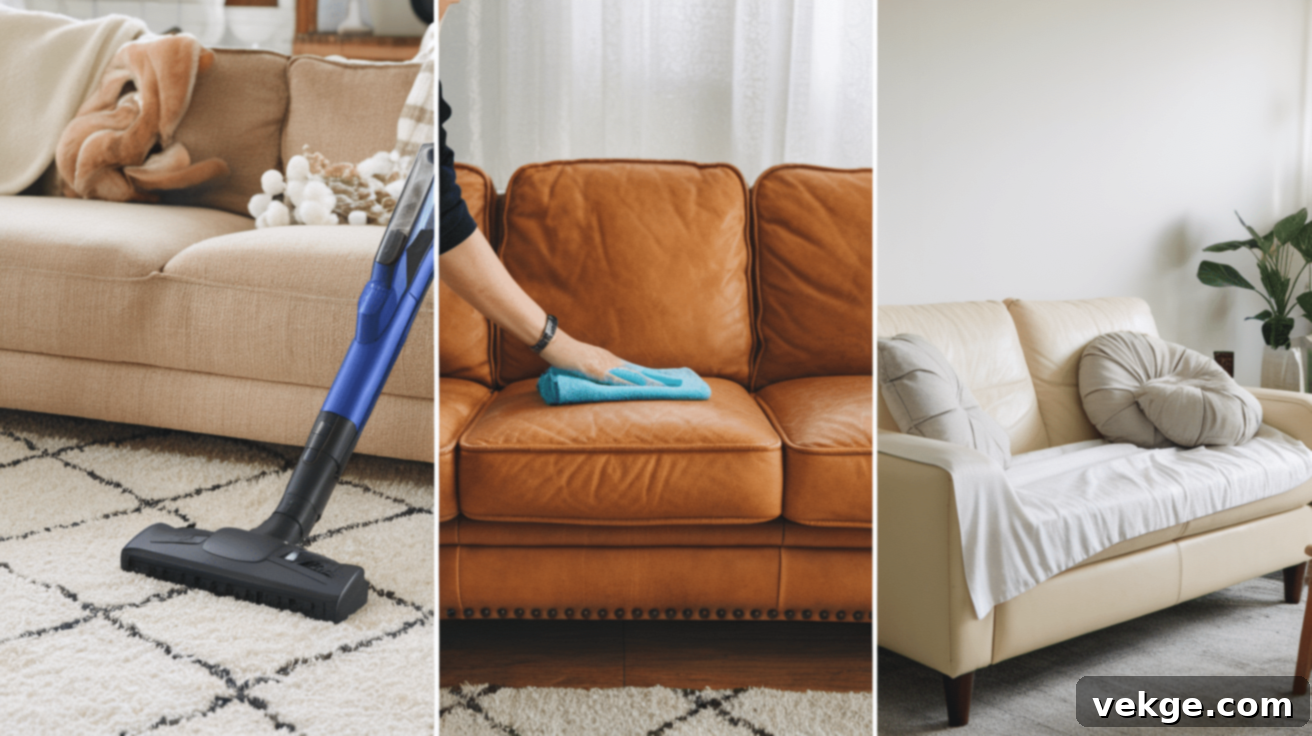
Taking a few minutes for routine couch maintenance might seem trivial, but its impact on your furniture and living space is profound. Regular care isn’t just about superficial cleanliness; it’s a proactive measure that yields significant long-term benefits for your comfort, finances, and the overall appeal of your home.
- Extends Lifespan and Durability: Consistently cleaning, fluffing, and protecting your couch directly combats the natural processes of wear and tear. By preventing dirt accumulation, maintaining cushion resilience, and safeguarding upholstery, you dramatically slow down degradation, allowing your couch to last for many more years than it would otherwise.
- Maintains Comfort and Support: Regular fluffing and rotation of cushions ensure that the filling remains evenly distributed and doesn’t compress or clump in specific spots. This consistent care keeps your cushions plump, supportive, and comfortable, preserving the initial feel and ergonomic benefits of your sofa.
- Preserves Appearance and Aesthetics: A well-maintained couch retains its original beauty, color, and texture. Prompt stain removal prevents permanent marks, while regular vacuuming keeps fabric fresh and free from dulling dust. This means your couch continues to be an attractive and inviting centerpiece in your living room, enhancing your home’s decor.
- Prevents Stains and Odors from Setting In: Quick action on spills and routine cleaning are the best defense against stubborn stains and unpleasant odors. By addressing issues immediately, you prevent liquids from penetrating deeply and bacteria from developing, keeping your couch hygienic and smelling fresh.
- Saves Money in the Long Run: Investing time in regular maintenance is an investment in your wallet. By extending your couch’s life, you avoid the significant cost of premature repairs or, more importantly, the expense of buying a brand-new replacement every few years. Small, consistent efforts prevent larger, more costly problems down the line.
- Promotes a Healthier Home Environment: Regularly vacuuming your couch removes allergens like dust mites, pet dander, and pollen that can accumulate in the upholstery. This not only keeps your couch cleaner but also contributes to better indoor air quality, beneficial for everyone in your household, especially those with allergies or respiratory sensitivities.
Ultimately, regular maintenance transforms your couch from a temporary fixture into a lasting piece of furniture that continues to provide comfort, style, and value for many years.
Conclusion
Your couch is far more than just a piece of furniture; it’s a foundational element of your home where countless memories are made – from quiet evenings of relaxation to lively family gatherings. Given its central role and constant use, it’s understandable that it requires a little care and attention to remain in excellent shape.
The good news is that maintaining your couch doesn’t have to be an arduous or time-consuming task. By understanding the critical factors that influence its lifespan – such as material quality, usage patterns, and environmental exposure – you can make informed decisions from the moment of purchase. More importantly, by incorporating simple, consistent maintenance routines into your home care, you hold the power to significantly extend its life and preserve its fresh appearance for years.
Investing in a quality couch from the outset and coupling that with regular care is the most effective strategy to avoid costly repairs or premature replacements. Whether it’s the simple act of fluffing cushions, quickly blotting a spill, or employing protective slipcovers, these small, consistent efforts collectively make a monumental difference.
So, dedicate a few minutes of attention here and there, and your cherished couch will continue to be the comfortable, stylish centerpiece of your living space, ready to support you and your loved ones through many more years of shared moments and relaxation.
